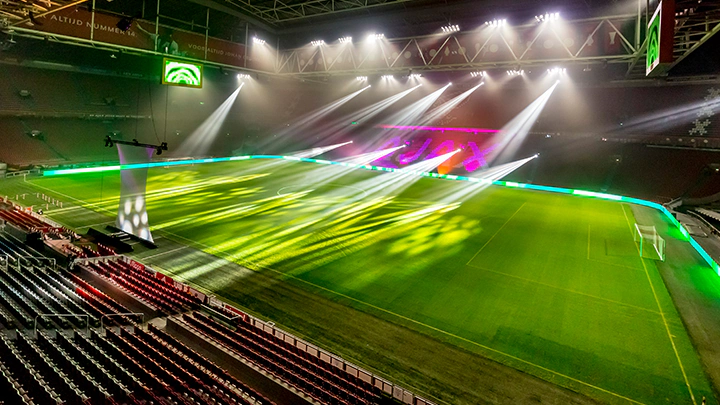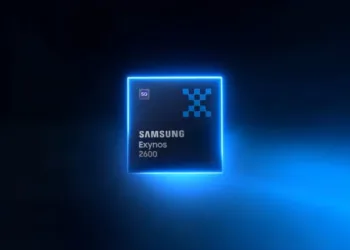Sports arenas and stadiums around the world are gearing up for a big change in lighting. They are letting go of their traditional outdoor metal halide and high-pressure sodium lamps and moving toward efficient, high-performance LED systems.
Dara Greaney, CEO of LEDLightExpert.com, says there are several key reasons prompting the transformation. “A modern LED light system truly redefines the spectator and player experience,” he explains. “The difference is noticeable.”
But the switch to LED lighting offers a whole lot more than enhanced performance. It also saves venues money and reduces their environmental impact.
Table of Contents
Why stadium managers are choosing LED light fixtures over traditional lighting to illuminate stadiums
Cost savings are where many stadium managers see LED lighting shine brightest. Facilities find that converting from metal halide systems to LED lighting results in average savings of 75% to 85%.
For example, the War Memorial Arena in Syracuse, New York, reduced its power consumption from 263,000 kilowatts to approximately 32,000 kilowatts. That’s an 87% reduction in energy usage.
The savings spring from efficiency. LEDs, or light-emitting diodes, convert roughly 80% of the electricity they consume into light, but metal halide bulbs release most of that energy as heat.
Stadium managers can also expect much less upkeep when they transition to an LED lighting system. Each traditional metal halide bulb produces somewhere around 100 lumens per watt when it is brand new. However, their light output is notorious for dropping by as much as half in only a few years. LED lighting, on the other hand, offers tens of thousands of hours with almost no maintenance.
“LED lights need far less upkeep compared to metal halide or sodium lamps,” Greaney explains. “This translates into significant cost savings and fewer disruptions due to lighting failures.”
Most importantly, though, stadiums can offer clearer, crisper light with LEDs. Shadows and dark spots vanish from the field. Players are no longer hindered by glare. The change enhances visibility for players, coaches, referees, and fans.
Better lighting on the field also improves television broadcast quality. In fact, diffused LED lighting virtually eliminates the need for color correction during post-production editing. It’s a critical consideration for venues hosting high-profile televised events.
What’s involved in the process of upgrading and transforming stadiums to LED lighting solutions?
Transitioning a stadium lighting system is no small feat. It involves careful consideration of dozens of variables, including fixture size, lenses, and mounts. Stadium managers must also consider the types of events that will be held in the space.
“Deciding whether your games will be televised influences many of your lighting parameters,” Greaney stresses. “Broadcast demands exacting standards for color temperature and brightness uniformity.”
From there, stadium managers must think through and set a host of lighting goals. They can either prioritize maximum brightness, energy savings, minimal glare, or a combination of these. LEDLightExpert.com helps clients by guiding them through these choices to design a system tailored to each venue’s unique needs.
When installing LED lighting solutions, stadium managers should take advantage of photometric studies and expert design consultations at no extra cost. It’s not easy to ensure a perfect lighting layout. Fortunately, some experts offer customized photometric studies before the process, free of charge.
“We are able to deliver lighting layouts quickly — within two days for simpler stadiums and a few days for more complex setups,” says Greaney. These studies map out how light will spread and where adjustments are needed to eliminate shadows and glare.
Such precise planning is crucial. After all, the buildout of a stadium lighting system is an important investment. Proper design maximizes your return on this investment by extending the life of the lighting and enhancing event quality.
How expert consultation can make all the difference in a stadium’s new LED lighting solution
An experienced consultant guides stadium managers to the best possible lighting layout and product choices.
“Clients need a thorough education so they can hit the ground running, ” Greaney adds. “We assist them as they position their fixtures to ensure the optimal visual experience for players, fans, and TV audiences. We don’t stop until we cover the different warm-up times they can expect when they turn on their new system. LEDs reach full illumination faster than metal halide lamps, and this allows for better event timing.”
By switching to LED systems, stadiums experience lower energy use, reduced maintenance costs, and improved lighting quality. Combined with expert design and consultation services from LEDLightExpert.com, venues gain lighting that meets modern demands and adapts to new technologies. With expert support, stadiums transform into environments that improve both game day and broadcast production.
Read more: Women’s World Cup 2025: India’s Victory Draws 185 Million Viewers, Matches Men’s T20 Final Record








